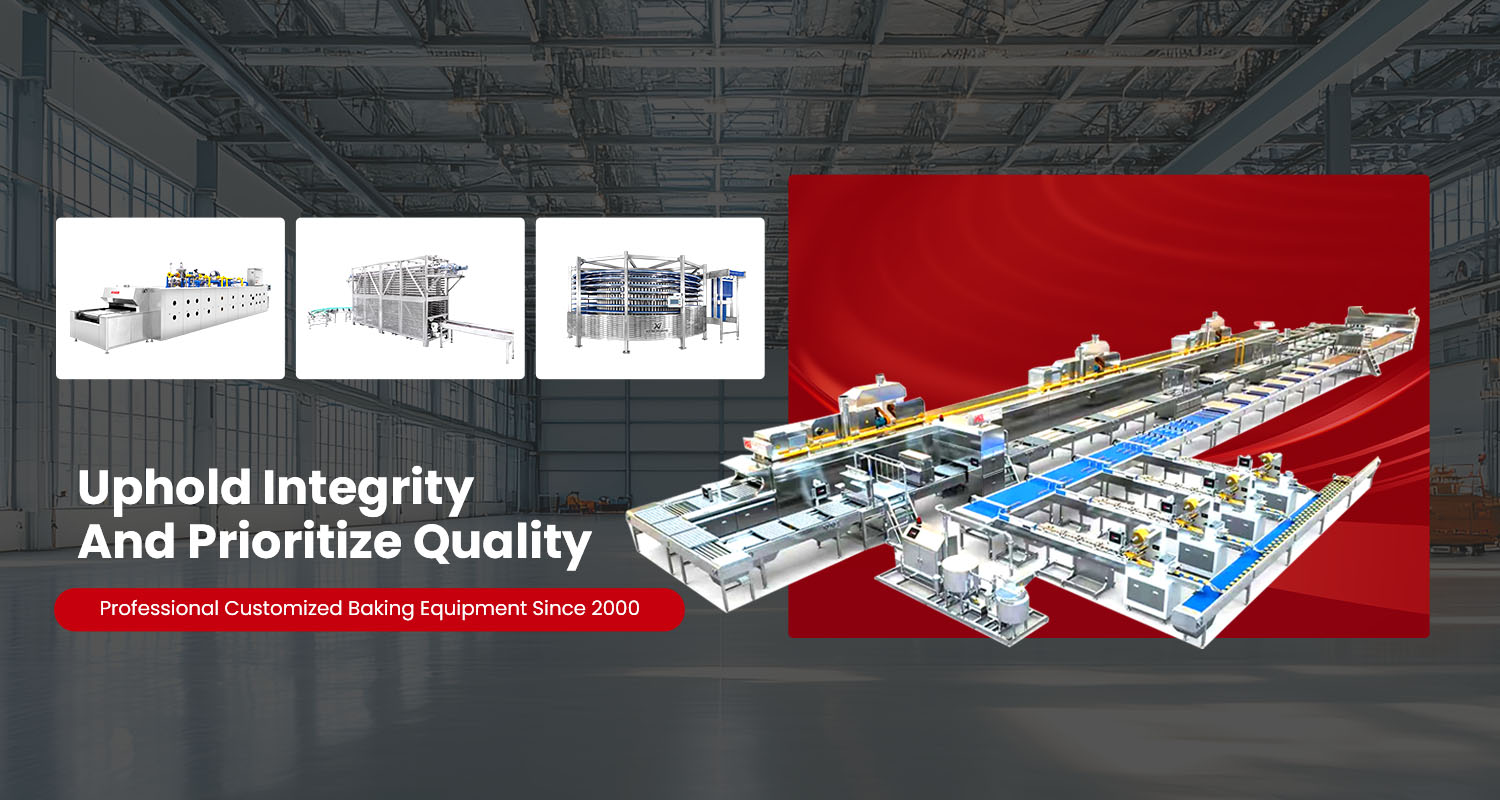What Factors Affect Equipment Lifespan in Food Industry?
In the food industry, equipment reliability is directly linked to production safety, efficiency, and cost control. Each piece of machinery, from mixers and ovens to conveyors and packaging systems, undergoes continuous exposure to humidity, temperature fluctuations, and cleaning agents. Understanding what affects their lifespan helps manufacturers plan better maintenance schedules and avoid costly downtime.
1. Material Quality and Construction
The materials used in food equipment define its strength, corrosion resistance, and overall longevity. Stainless steel grades such as SUS304 and SUS316 are the most common because they resist acids, alkalis, and high moisture environments. Machines exposed to saltwater or acidic foods benefit from 316L stainless steel, which provides enhanced pitting resistance. Poor-quality alloys or thin-wall structures, in contrast, lead to premature wear and stress fractures. For equipment like mixers, slicers, and ovens, precision welding and smooth internal surfaces are crucial for preventing microbial buildup and extending service life.
2. Frequency of Use and Load Intensity
The lifespan of food machinery decreases significantly under continuous or excessive workloads. For example, a packaging line rated for 12 hours per day may fail earlier if operated 24/7 without breaks or cooldowns. Overloading mixers or grinders also strains motor bearings and gear assemblies. Manufacturers typically specify operational duty cycles, and adhering to those guidelines ensures consistent mechanical performance. High-end systems designed for industrial plants usually incorporate duty-rated motors and reinforced shafts to handle heavier workloads over long periods.
3. Cleaning and Sanitation Practices
Frequent cleaning is mandatory in food processing, but improper techniques can reduce equipment life. High-pressure water jets, harsh detergents, or alkaline sanitizers can corrode surfaces or damage seals. Over time, this leads to leaks, contamination risks, and electrical issues in automated systems. Using CIP (Clean-In-Place) systems with controlled pH and temperature not only maintains hygiene but also preserves internal components. Equipment designed with IP65 or higher protection levels can withstand frequent washdowns and moisture exposure without electrical degradation.
4. Maintenance and Lubrication
Scheduled preventive maintenance is a major factor in extending machine lifespan. Components such as bearings, gaskets, and drive belts degrade naturally and require regular inspection. Lack of lubrication causes frictional wear, overheating, and increased energy consumption. Using food-grade lubricants is essential to meet hygiene standards and prevent contamination. Predictive maintenance technologies—like vibration monitoring and thermal imaging—help identify mechanical fatigue before breakdowns occur. A well-managed maintenance plan can increase operational lifespan by 20–40% compared to reactive servicing.
5. Environmental Conditions
Temperature, humidity, and airborne contaminants directly influence machine longevity. Food processing plants often experience wide temperature ranges, especially between cooking and refrigeration zones. Condensation can corrode sensors and control panels. In bakeries and meat plants, exposure to steam, oil, or fine dust requires sealed housings and corrosion-proof coatings. Proper ventilation, dehumidification, and environmental control systems protect sensitive electronics and prevent internal rusting. Consistent environmental management reduces unplanned downtime and replacement costs.
6. Operator Training and Handling
Even the most durable machinery deteriorates quickly under improper use. Untrained operators may use incorrect settings, overload systems, or neglect safety interlocks. Repeated misuse causes wear on mechanical joints, actuators, and electronic boards. Regular operator training ensures correct procedures for startup, shutdown, and cleaning. Well-trained staff also identify abnormal noises, vibrations, or leakages early, allowing timely intervention. Studies show that facilities with structured operator training programs report 30% fewer mechanical failures than those without.
7. Design and Technological Integration
Modern food machinery integrates smart control systems that monitor temperature, torque, and production speed. These intelligent features reduce stress on components through automatic load balancing and shutdown alerts. Modular designs allow easier replacement of parts and reduce repair time. Using automation technologies such as PLC-based systems and touchscreen HMIs enhances both precision and lifespan. When machines communicate in a smart production line, energy efficiency improves while wear and tear are minimized.
8. Spare Parts Availability and After-Sales Support
A lack of reliable spare parts can shorten a machine’s effective life. When specific bearings or control boards become obsolete, entire units are often replaced prematurely. Choosing manufacturers that guarantee 10+ years of component availability ensures sustainable operation. Equally important is responsive after-sales service—timely support prevents small issues from escalating. Brands offering detailed service documentation and online diagnostics provide long-term reliability and reduce lifecycle costs.
9. Compliance with Food Safety Standards
Equipment designed according to FDA, CE, and ISO 22000 guidelines is built to withstand high sanitation cycles and mechanical stress. Certified components—like EPDM seals and BPA-free plastics—endure repeated sterilization without structural weakening. Compliance-driven engineering not only enhances food safety but also improves machine durability by emphasizing material compatibility and structural integrity. Regular certification audits encourage continuous improvement in equipment design and longevity.
10. Upgrades and Modernization Practices
Older machines may still perform well mechanically but lag in control efficiency. Upgrading them with variable frequency drives (VFDs), sensor feedback loops, or energy-efficient motors can extend their operational lifespan. Such modernization not only saves energy but also reduces wear caused by abrupt starts and stops. Planned equipment retrofits often yield 10–25% longer usable life, especially in automated bakery, dairy, and packaging applications.
Partnering with Reliable Manufacturers
Selecting equipment from reputable suppliers significantly influences long-term performance. Manufacturers like KCSMART specialize in advanced food machinery engineered for high durability and sanitary performance. Their systems are designed with stainless steel precision, intelligent control panels, and modular structures that simplify maintenance and replacement. Partnering with professional manufacturers ensures that every investment in processing equipment results in consistent production efficiency and extended service life.
In summary, factors such as material quality, operation frequency, environment, and maintenance practices jointly determine the lifespan of food industry equipment. By prioritizing preventive maintenance, using certified materials, and collaborating with reliable manufacturers like KCSMART, food processors can maximize machine reliability and ensure stable, hygienic production over many years.






